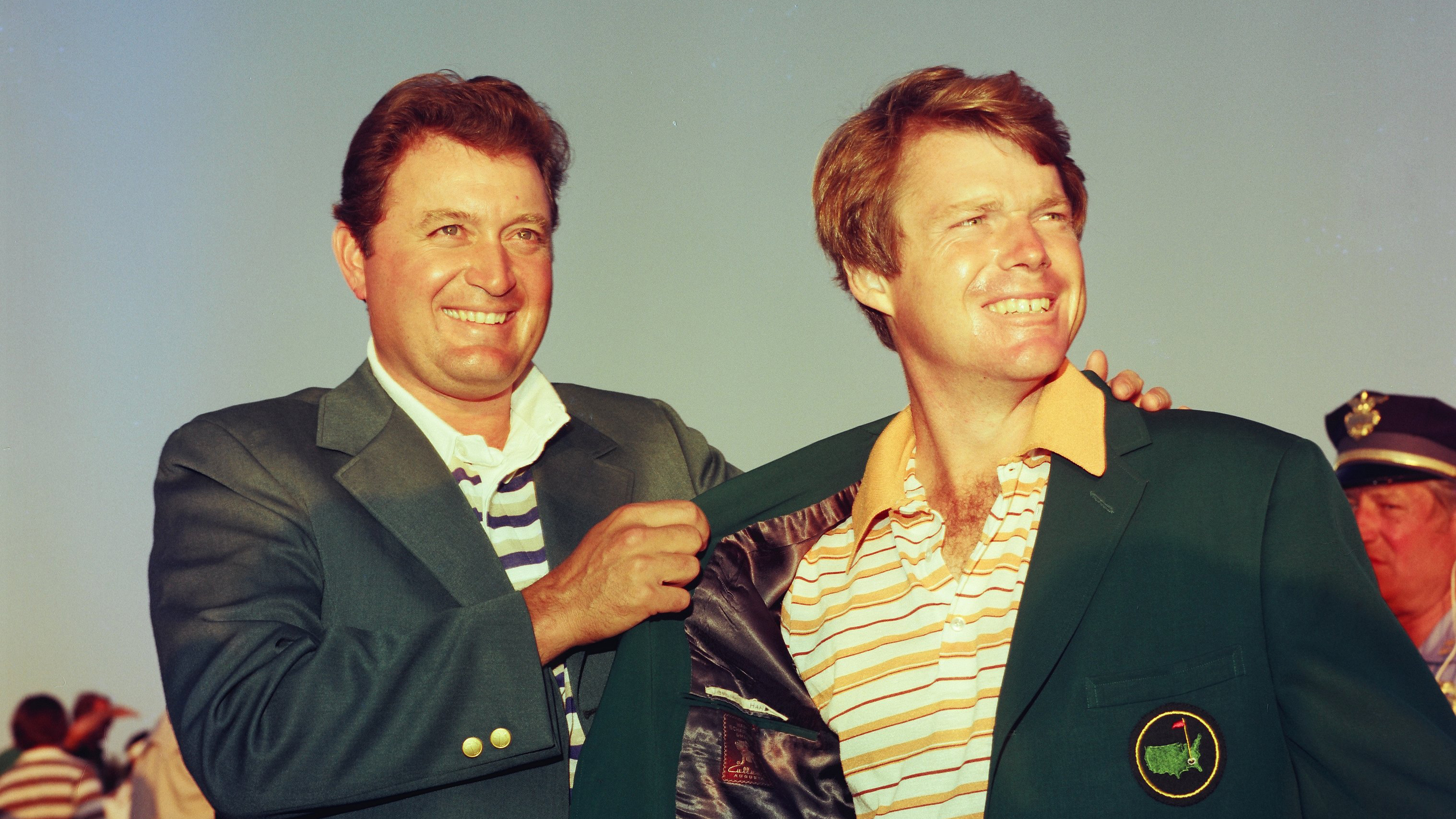
In July of 1977, under azure Scottish skies, Tom Watson and Jack Nicklaus fought one of the most memorable battles in golfing history. Finishing 11 and 10 shots ahead of the field, Watson came out on top at Turnberry in the famous “Duel in the Sun.”
But it wasn’t the first Major confrontation the American pair had fought, nor was it the first time that Watson had tamed the Golden Bear. In the 1977 US Masters Watson and Nicklaus duked it out right to the wire with the younger man finally prevailing. That thrilling competition has been somewhat forgotten, overshadowed by the monumental encounter between the two men in South Ayrshire just three months later. But it’s a contest well worth recounting. This is the story of the stirring overture to the Duel in the Sun.
The Build Up
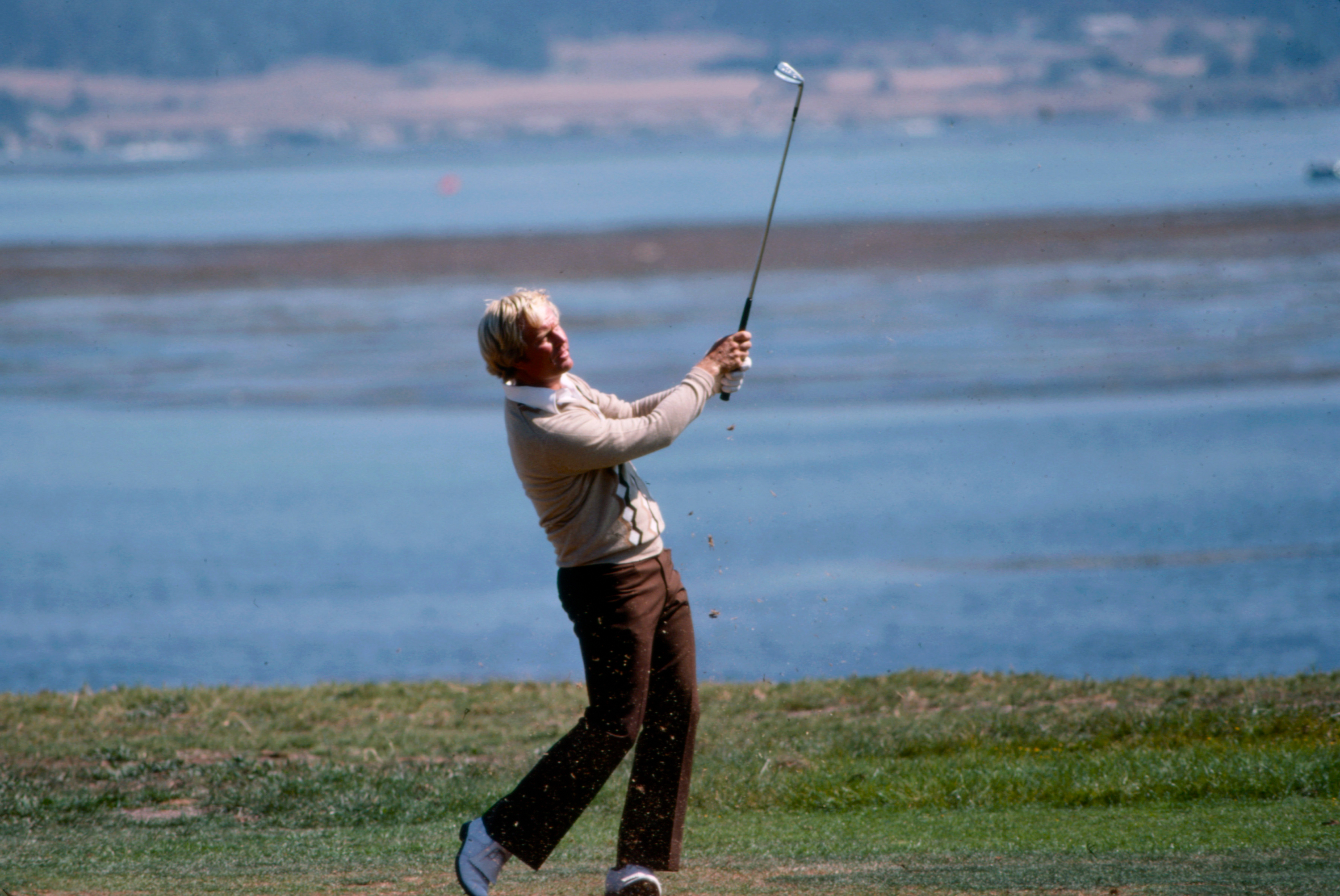
At the start of 1977, golf fans had reason to expect a great deal from the year’s first Major. The best players in the world were on form and a strong field had assembled at Augusta for the 41st Masters tournament. Jerry Pate, 1976 US Open champion, had won the first event of the year in Phoenix; Jack Nicklaus had claimed his 62nd PGA Tour title in the Jackie Gleason Classic in Florida and talented Tom Watson had won twice in California. Other favourites included Tom Kite, Hale Irwin and Ben Crenshaw. In addition, everybody was excited to see what 19-year-old Spaniard Severiano Ballesteros might produce on his first Masters outing, having thrilled crowds in The Open at Royal Birkdale the previous summer.
Watson led the PGA Tour money list at the start of Masters week, but he was under some scrutiny for a couple of recent poor finishes that had led some of the, more cynical, members of the press to suggest he might have an issue as a “choker.” In The Players Championship at Sawgrass he’d been three ahead with nine to play. But he bogeyed four holes on the back side and then drove into the water on the 18th to hand the tournament to Mark Hayes. In the following week’s Heritage Classic at Harbour Town, Watson was four ahead going into the final round. But after some scrappy golf, he had lost his advantage through nine holes. When he found water on the 14th, his race was run and a disbelieving Graham Marsh walked away with the title.
Watson knew he would face questions about his ability to close a tournament in the build up to The Masters so, as far as possible, he did his best to avoid them. While most were practising at Augusta, Watson spent time with Byron Nelson to reinforce some of the advice the great man had imparted to him the previous autumn in Roanoke Texas. Principal within this guidance was the necessity to slow down. Not so much the swing, more what Watson did before making the swing, setting up or lining up on the greens. Nelson (and Watson) felt this would help the young man cope better as the pressure began to build.
When he finally arrived at Augusta, Watson did indeed have to face the press and he took the questions head on. “If you lead and don’t win, people say you choke,” he said. “I guess I won the wrong tournaments so far!”
Round One

Round one of the 1977 Masters was played in challenging conditions with the swirling winds even stronger and more perplexing than usual. Score of the day came from underrated Hubert Green who hit 16 of 18 greens and posted a 67 that might have been even better. Green had won 10 individual tournaments on the PGA Tour through the 1970s but had struggled to force his way into the public conscience as a genuine contender. He had an unusual technique, particularly on the greens and, without a Major to his name, golf fans looked more towards Nicklaus, Watson, Miller and Irwin as the real stars of the game. Green would fade at Augusta but he wouldn’t have to wait long to break his Major duck. He won the 1977 US Open at Southern Hills, despite being informed by police during the final round they’d received a phone call threatening his assassination on the 15th hole – that was a testing two-putt par!
At Augusta on the Thursday evening, Green was two clear of Don January and Bill Kratzert, a former forklift truck operator. Watson was three back after a 70, tied with Jerry Pate, Hale Irwin and Tom Kite. Nicklaus shot level-par 72 while Seve’s first competitive round at Augusta was a creditable 74.
The Favourites and Lesser Known Contenders
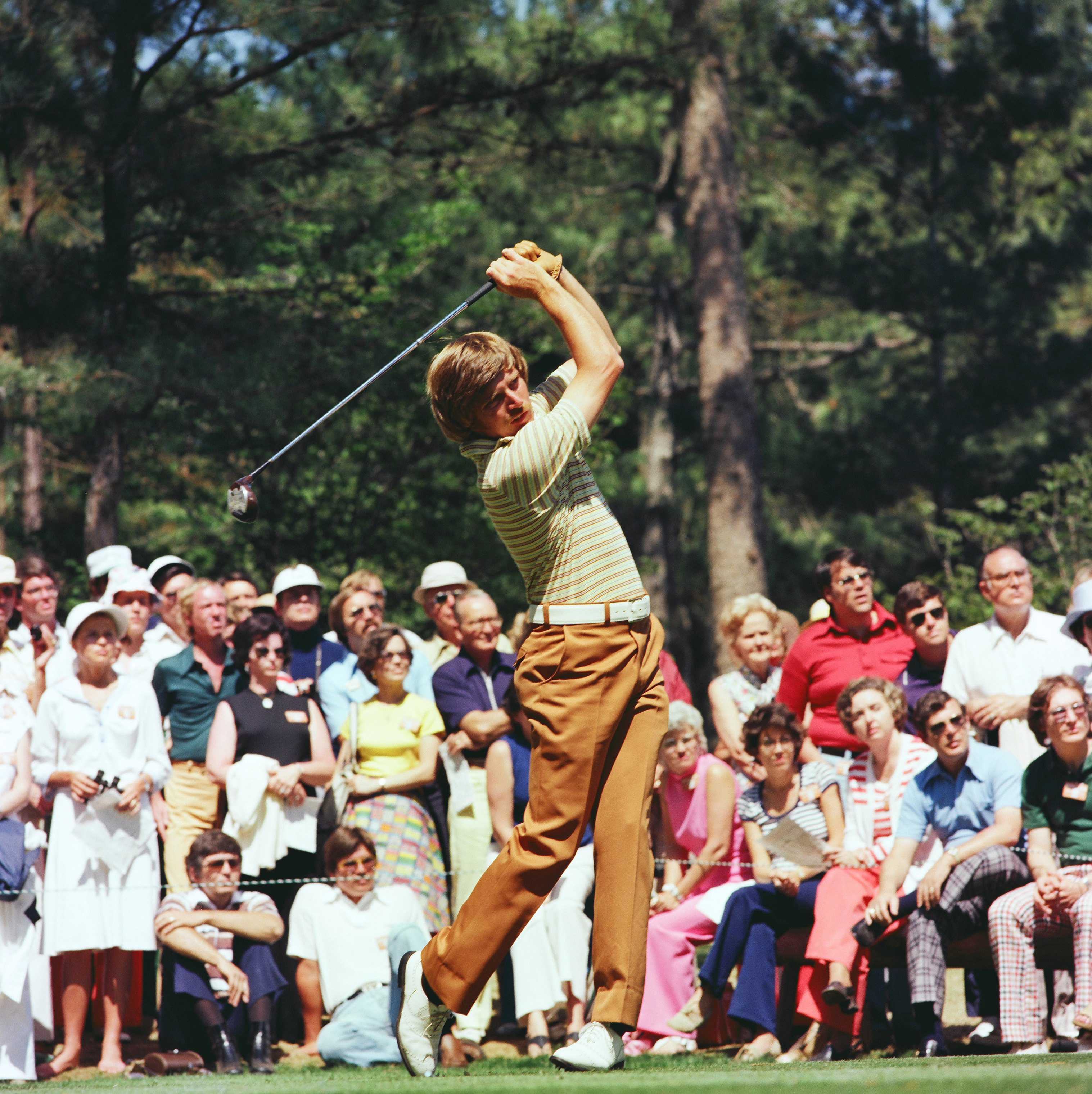
Things didn’t run so smoothly for Green on day two. He fell foul of the notorious par-3 12th, chopping back into the water from the bunker behind the green. He did well to salvage a five, but a 74 took him out of the lead and he wouldn’t feature again that year.
Watson moved to the front of the pack with a 69 despite playing some poor iron shots that he put down to lack of rhythm. He was at five-under and tied with Rod Funseth. At 44 and without a win on Tour since 1973, Funseth was as surprised as anyone to be in the position. When asked if he could win, his answer hardly inspired confidence. “No, no I can’t win.” He finished in a tie for 14th. Nicklaus kept well in touch with a 70 and was three behind on two-under par, tied with Jerry Pate. It was still wide open.
On “moving day” at Augusta an unlikely contender emerged. Rik Massengale rocketed up the board, and briefly shared the lead, with a fine 67. Although he’d won a couple of times on the PGA Tour, he’d never broken into the top-10 on the money list and this was only his seventh Major start. He had a reputation as something of a wild man in his younger days but had become a born-again Christian in 1975 and tamed his inner demons. He’d been a winner on the ’77 Tour, at the Bob Hope Desert Classic in February, but few believed he could triumph at Augusta with such a strong quorum of players surrounding him on the leaderboard.
As it turned out, Massengale didn’t lead going into the final day – Tom Watson birdied the 18th to tie Ben Crenshaw at seven-under-par, one ahead of Massengale and three clear of Jack Nicklaus.
The Final Round – The Early running

With one round to go, and within just three of the lead, most of the press and the public viewed the Golden Bear as favourite. It was a reasonable position to take: Nicklaus had been a winner at Augusta five times and had finished no worse than 8th in the event during the 1970s. He was a proven champion and a steely competitor. The consensus was that, if Nicklaus was in contention down the stretch, the others (including Watson with his recent reputation for “choking”) would wilt under the pressure.
Back in 1977, The Masters worked the final day pairings differently to now. The man in first was paired up with the man in third in the final group, second and fourth went together in the penultimate group and so forth. That meant Jack Nicklaus played with Ben Crenshaw in the second to last group with Tom Watson and Rik Massengale the last to tee off.
As predicted, Nicklaus showed his hand early on Sunday, opening with two birdies and reaching the turn in 33. Crenshaw couldn’t take it and, after bogeys at the 2nd and 3rd holes, his tournament was effectively over – he laboured to a closing 76 and a tie for eighth place.
Watson wouldn’t be so easily intimidated by the great man. It may have helped him to be playing with the little-fancied Massengale, if so he took full advantage. With Nicklaus just one behind him as he stood on the 5th tee, it was time for Watson to make a statement. He reeled off four straight birdies to complete the first nine in 32 and to extend his advantage over Nicklaus to four strokes. “I was pretty shocked to shoot 33 on the front and to lose ground,” Nicklaus said.
The Run For Home
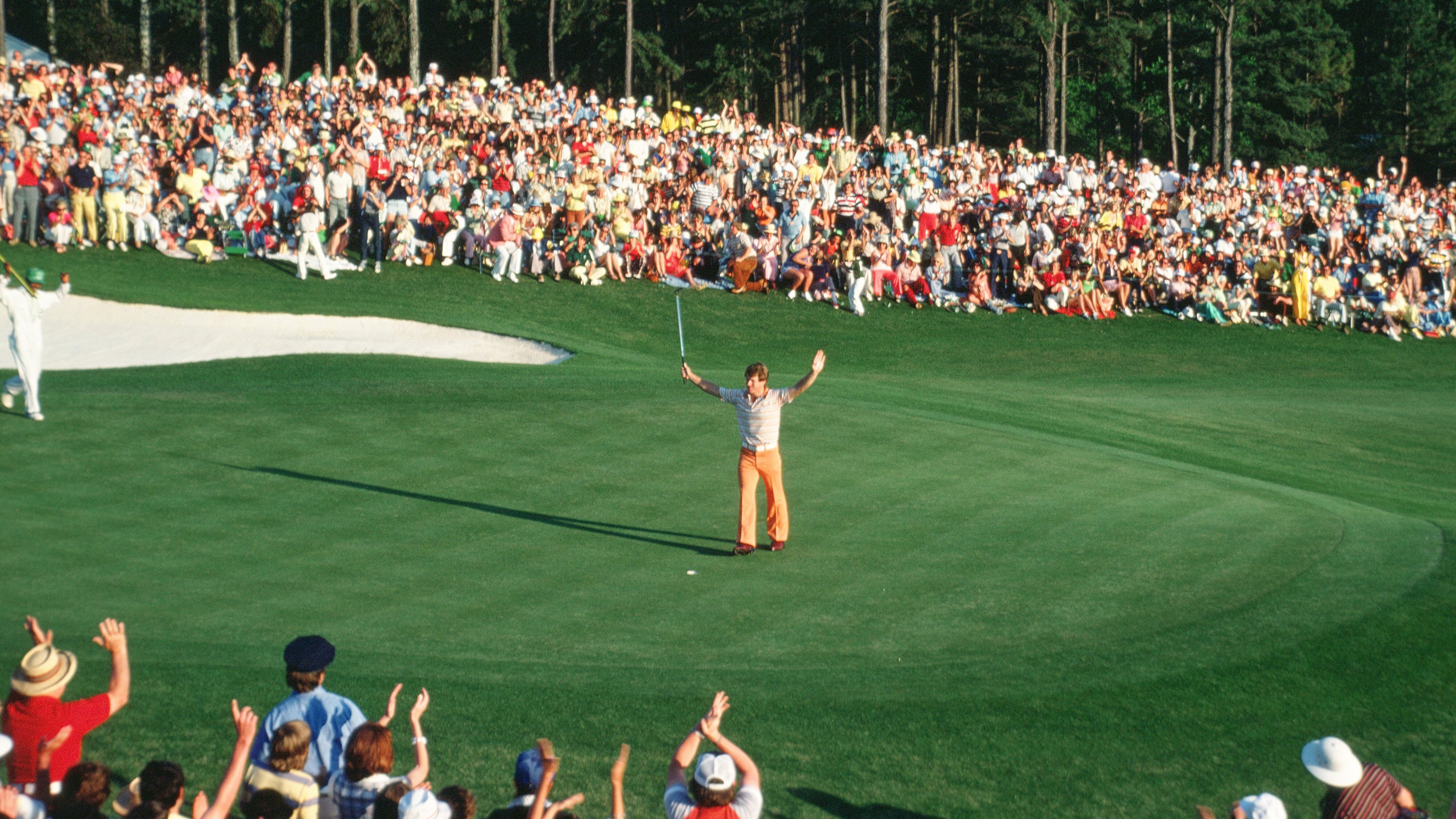
But, as the famous saying goes, the tournament doesn’t really start at Augusta until the back nine on Sunday. So it was in 1977, as Nicklaus and Watson separated themselves from the pack and went toe to toe.
Watson’s four shot lead was cut to two through 10, as Nicklaus made a fabulous birdie and Watson dropped a shot. Then, the younger man was looking on from the 11th green as Nicklaus rolled home a birdie putt on the treacherous par-3 12th to reduce the deficit to just one.
On the par-5 13th, Nicklaus carried Rae’s Creek in two and knocked in a three-foot birdie putt to tie Watson at 10-under-par. Now came a key moment. As the cheers rang out for Nicklaus he turned around to salute the fans watching from alongside the 13th fairway. It just so happened that he did this exactly in the direction of Watson who was standing in that fairway waiting to make his approach. To Watson it looked as though the Golden Bear was goading him, suggesting: “Take that laddie! What are you going to do now?” This, of course, was never Nicklaus’ intention and, after the round he would apologise to Watson when the latter asked if it had been gamesmanship.
Jack needn’t have apologised though as Watson was clearly galvanised. He too birdied the hole and re-established his one-shot advantage.
Tom bogeyed the 14th and, after both men had birdied the par-5 15th and secured par at the 16th, they were tied with two to play.
Nicklaus had first shot at the 17th and left himself a makeable birdie putt. He later said he felt sure he would get it, as he had seen the line. But it drifted past and a chance was missed.

After Nicklaus had teed off well on the 18th, Watson then fired his approach to the penultimate hole, a nine-iron that ended 20-feet from the cup.
Jack considered his approach to the last and had a strategy worked out – to play safe beyond the pin. But his plan was blown out of the water when a huge roar surged up the fairway from the 17th green. Watson had made his birdie and was one ahead. Nicklaus quickly changed his tactics and decided on a more aggressive second shot, an attempt to get close and force Watson’s hand. But he’d been caught in two minds and he didn’t commit to the stroke, it ended in the greenside bunker.
Watson found the fairway from the tee and walked up to his ball to see Nicklaus settling over a putt. He asked the gallery and was told his rival was trying to save par. When Nicklaus missed, Watson knew he had a two-shot cushion. He played safe, made a steady par and had won his first Green Jacket. Nicklaus bogeyed the last for a 66, against Watson’s 67.
The younger man had taken everything his more experienced opponent could throw at him and emerged victorious. Tom Watson was no “choker.”
Rik Massengale dealt well with the pressure cooker atmosphere and carded a 70 to tie for third with Tom Kite, who had closed with a fine 67. Hale Irwin was fifth with Lou Graham and David Graham tied for sixth.
Seve Ballesteros improved on the weekend after making the cut by a single shot. He was two-under-par for the final 36 holes and had proved to himself he had the game to win at Augusta. He would do so, becoming the first European champion, three years later.
For Watson, this was a key moment in his career. He had confounded those who doubted his mental strength and he had defeated the best there had ever been down the stretch in a Major. If he ever found himself in that position again, he knew he had what was required. He wouldn’t have to wait long.
Final results at the 1977 U.S. Masters
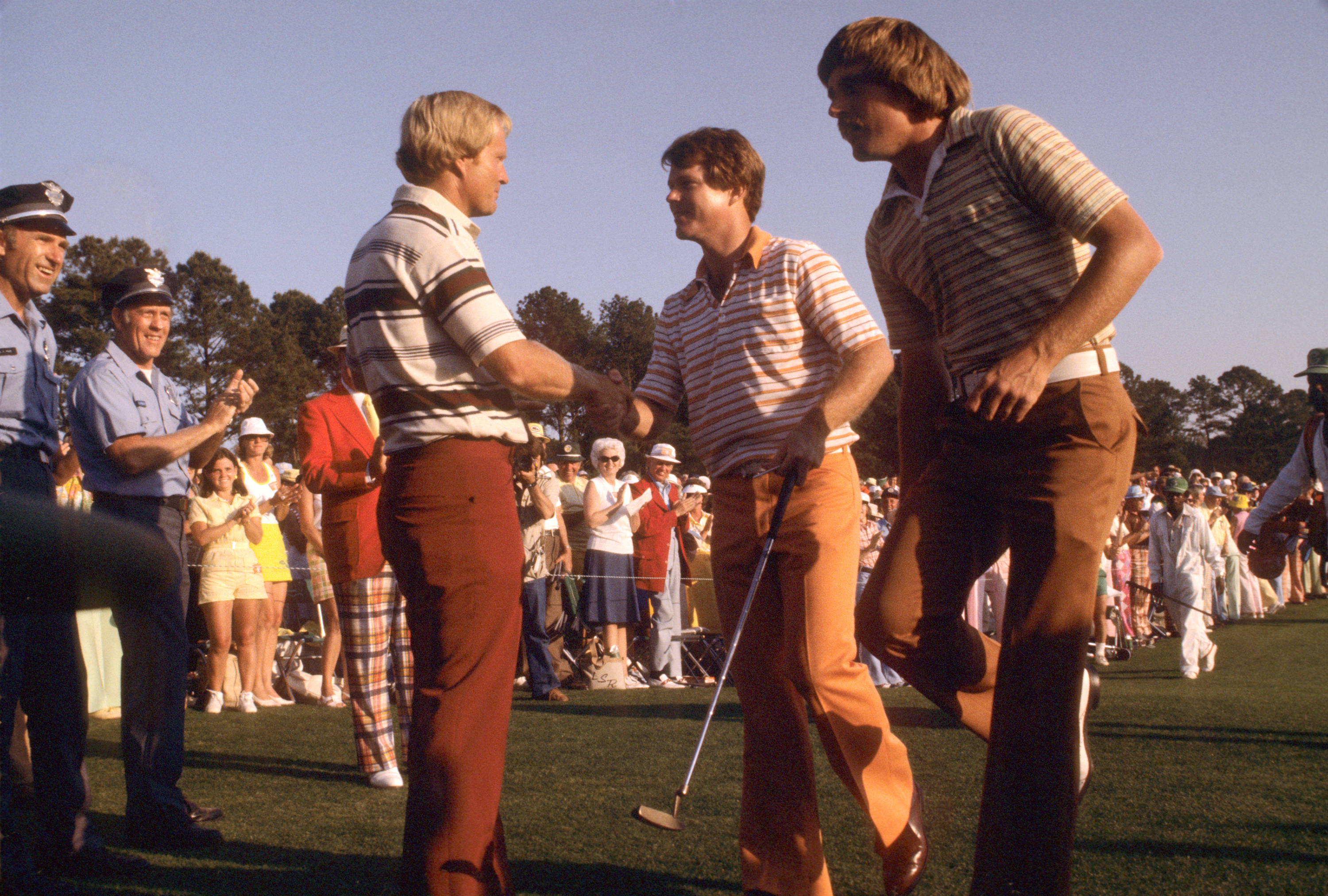
1 Tom Watson (USA) 70 69 70 67 276
2 Jack Nicklaus (USA) 72 70 70 66 278
T3 Tom Kite (USA) 70 73 70 67 280
T3 Rik Massengale (USA) 70 73 67 70 280
5 Hale Irwin (USA) 70 74 70 68 282
T6 David Graham (Aus) 75 67 73 69 284
T6 Lou Graham (USA) 75 71 69 69 284
T8 Ben Crenshaw (USA) 71 69 69 76 285
T8 Ray Floyd (USA) 71 72 71 71 285
T8 Hubert Green (USA) 67 74 72 72 285
T8 Don January (USA) 69 76 71 69 285
T8 Gene Littler (USA) 71 72 73 69 285
T8 John Schlee (USA) 75 73 69 68 285
Other players of note in 1977 Masters field
Lee Elder – Finished tied 19th (first African American to make Masters cut)
Seve Ballesteros – Turned 20 during event, first European winner in 1980
Fred Ridley – Career amateur who went on to be president of USGA and is now Augusta Chairman
Christy O’Connor Jnr – His only outing at The Masters
Tommy Horton – Englishman’s last appearance at the Masters
Sam Snead – 65-year-old playing 28 years after his first win in 1949







